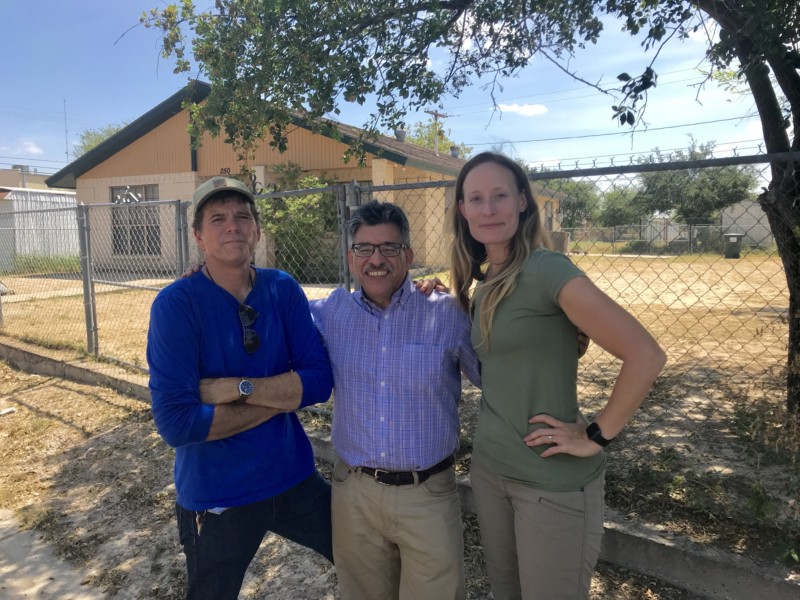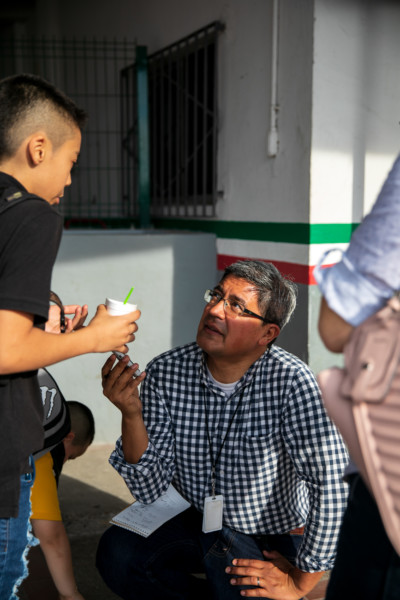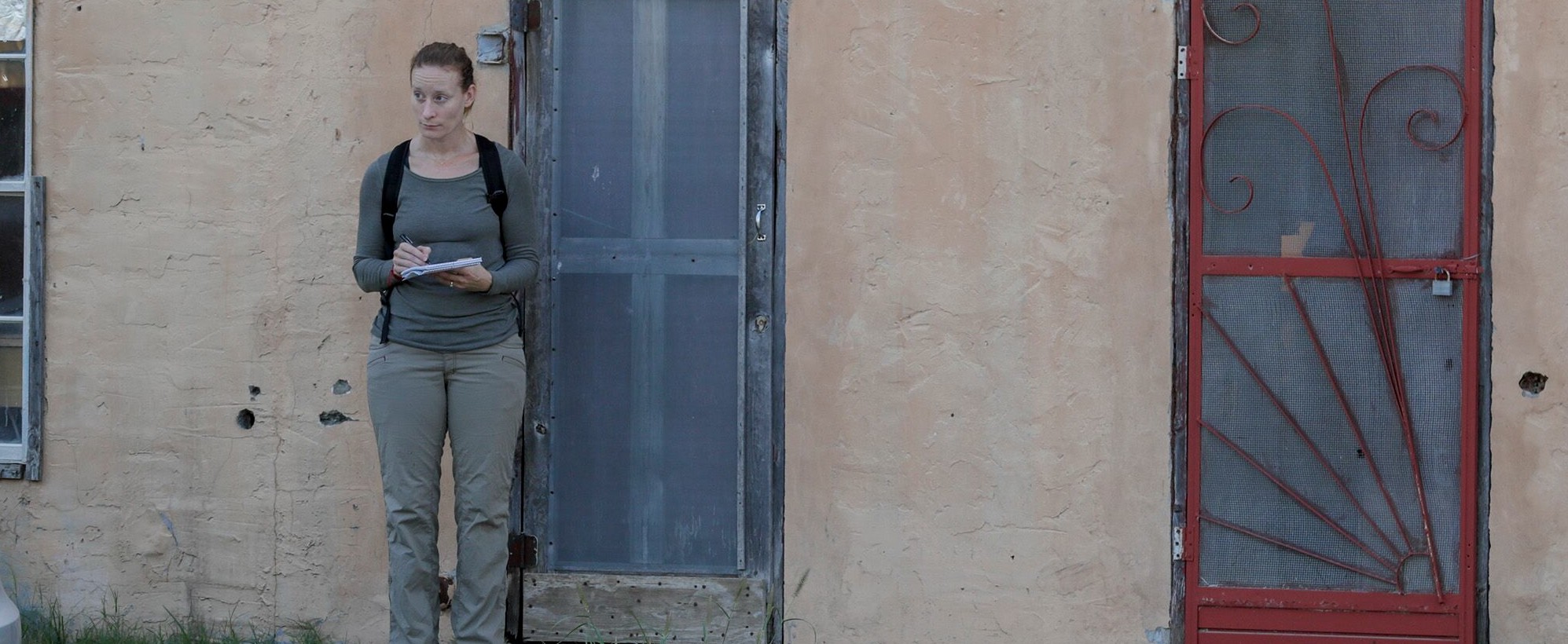Sign up for The Media Today, CJR’s daily newsletter.
In January 2018, Los Angeles Times Houston bureau chief Molly Hennessy-Fiske proposed that she and a photojournalist move close to the US-Mexico border.
Hennessy-Fiske, who has lived in the Lone Star State for eight years, suggested the project because she wanted to hone in on the Rio Grande Valley—an area in south Texas where the river serves as the most distinct demarcation between the two countries. Border cities like those in the Rio Grande Valley have been the subject of increased national coverage since Donald Trump’s election, especially as outlets document the continued fallout from the administration’s family separation policy and its intent to fund a proposed border wall through a recently issued national emergency declaration.
From the new issue of CJR: Getting over ourselves
By renting a house for a few months, preferably on the riverfront, Hennessy-Fiske argued that LA Times journalists might better learn what it’s like to live in an area where residents, Border Patrol agents and migrants frequently cross paths. She got the go-ahead, and immediately started auditioning cities on the Texas border.
“We knew we wanted to be in an area that was what Border Patrol refers to as ‘high traffic,’ where we would be seeing people coming across and experiencing that,” Hennessy-Fiske says. “But we also wanted to be somewhere where people were living.” She asked journalists, community groups, Border Patrol agents, and other sources for suggestions. She considered Brownsville, a Gulf Coast town nestled at the southernmost tip of the state, and McAllen, a metropolitan area neighboring Reynosa, Mexico.
But she kept circling back to Roma, a city in the Rio Grande Valley known for its scorching summers and frequent migrant crossings. Hennessy-Fiske had initially rejected the city as an option at first because it’s often chosen by Border Patrol officials when reporters submit ride along requests—something Hennessy-Fiske has previously participated in herself.
Ultimately, she says, “What we found was not what I or anybody else had gotten from ride alongs.” She and photojournalist Robert Gauthier discovered a community much like many others in the US, filled with “old men wearing T-shirts with ironic messages” and “toddlers chasing doting grandparents up and down the streets,” Hennessy-Fiske wrote in a December column about the project. Soon after their arrival, they covered canicula, a period of intense summer temperatures that keep residents inside and increase the chances of migrants dying from heat exhaustion. And they shadowed Border Patrol agents who daily try to chase migrants who enter Roma by crossing over the river.
America’s attention has really been hyperfocused on this 1,900-some-mile region that most Americans will never set eyes on.
Gauthier and Hennessy-Fiske lived continuously in the town for a month, but continued staying at the house part-time for the next three. Hennessy-Fiske says she still travels to Roma; both journalists keep in touch with friends and contacts forged in the area.
“I’ve specifically come back to Roma a lot, to see people, to have meals with them, to go over to their houses, to make sure they got copies of the stories,” Hennessy-Fiske says. “Some of them have received offers from the government for their lands.”

From left: LA Times photographer Robert Gauthier, editor Steve Padilla, and reporter Molly Hennessey-Fiske stand outside the home they rented in Roma, Texas. Photo by Verónica Cárdenas.
In the past year, both the LA Times and The New York Times have sent reporters to live in border cities, in hopes they might better learn about, and from, the people who make their homes there. Since the start of the year, The New York Times has assigned several reporters to live near the border in both Texas and California. National correspondent Jose A. Del Real and freelance photojournalist Emily Kask recently reported on the sewage and industrial waste polluting Calexico, California neighborhoods. New York Times Houston bureau chief Manny Fernandez, who has made numerous trips to Texas border cities in the past, will now be focusing on McAllen, Texas. Freelance visual journalist Ilana Panich-Linsman will be living and working there for The New York Times as well. And while he won’t be moving there full time, correspondent Simon Romero has spent much of his time recently in El Paso, Texas, says New York Times deputy national editor Kim Murphy, who is in charge of border and immigration coverage.
“Our view was not to really focus on any one place, but to have eyes and ears on the border 24/7, so that we can start seeing the stories that you only get when you live, work, eat and breathe in a place,” Murphy says. “It’s not going to be a full-time thing forever, but for now, at a time when you almost can’t pitch me a border story that I don’t want, it worked out well for us.”

New York Times reporter Manny Fernandez reports from the Gateway International Bridge between Brownsville and Matamoros. Ilana Panich-Linsman for The New York Times
This month, the The New York Times also launched a new “pop up” newsletter — “Crossing the Border.” That newsletter will feature the paper’s immigration coverage, as well as reporting from other outlets that New York Times editors have been following.
“America’s attention has really been hyperfocused on this 1,900-some-mile region that most Americans will never set eyes on,” Murphy says. People’s understanding of life on the border, she adds, is often informed by movies that “feature exciting shootouts and cartel violence and all kinds of things that don’t really reflect the day-to-day life of people who live there.”
Panich-Linsman, who’s normally based in Austin, Texas, says she arrived in McAllen in early February. While working in a local coffee shop recently, she was able to meet a source for a long-term project she’s working on.
“It’s not that these opportunities don’t present themselves at all when you visit for shorter periods, but being here for this long allows me to relax a bit and let sourcing happen organically,” she says. Spending extended time in McAllen also gives her a chance to take in her surroundings, rather than simply looking for photo opportunities.
The increased focus on the border also gives national outlets the chance to recognize the ongoing work of local and state reporters, and to look for writers and photojournalists in border cities who can guide and collaborate on projects. Hennessy-Fiske and Gauthier partnered with freelance journalist Verónica G. Cárdenas while living in Roma. Cárdenas, who lives in McAllen, shot video footage and photos for the LA Times. She also helped Hennessy-Fiske and Gauthier connect with the neighborhood. In the beginning, the LA Times team often drew suspicion; neighbors weren’t sure why they were there and whether they were safe to talk to.
“Sometimes the people would ask me, wondering if Rob and Molly were trustworthy because they’re white people,” Cárdenas says. “It was because of the location of the colonia—the neighborhood—being so close to the river, right? Nobody trusts each other.”
As the year continues, Hennessy-Fiske intends to keep following developing stories in Roma and other border cities.
“I always encourage other reporters, even at our paper, to come to the border but also to do immigration coverage,” she says. “I’m happy to help anyone else who wants to do it or get started. I’m not a native Texan, I’m not from out West, but I think it’s really important.”
ICYMI: The immigration syllabus: 10 essential stories
Has America ever needed a media defender more than now? Help us by joining CJR today.



